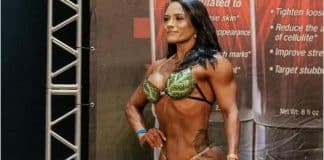Should You Train to Failure?
Training to failure has so many debates wrapped around it. Much of the controversy comes from the disconnect between real world experience from top pros vs controlled studies in labs. In my opinion, both of these can co-exist while both should be taken with a grain of salt.
Real world experience is great, but there’s so many confounding variables especially when you consider so many things contribute to muscle growth. Science is great because it can control for variables and repeat testing. However, studies are flawed, researchers are flawed, and study designs don’t always translate to what a person needs to do in the gym.
So both aspects are important, but at the same time, both aspects have major limitations.
As for the topic of training to failure, many bros are obsessed with training to failure. Balls to the walls are tattooed into their brains. However, the totality of strength training research indicates training to failure is either unnecessary or suboptimal (1).
So what’s the average lifter like you supposed to believe? Let’s find out.
 Defining Failure
Defining Failure
Many studies define failure differently. Many studies also approach failure very differently. Some studies, participants are not training hard enough to reach failure while other studies, researchers are screaming at participants to really push every set.
In the real world, I define failure as reaching the point within the set where you can’t complete or attempt another completed rep without sacrificing other variables like form and tempo.
So now that we have a basic definition, let’s discus this hot topic.
Real World Relevance?
Firstly, as a coach who’s worked with hundreds of lifters in person with varying levels of experience levels, I don’t believe many people know how to train to failure or what failure feels like. Whether this is optimal or not will be discussed later.
But the discussion can’t start without experiencing failure. Many people especially beginners simply don’t push their sets hard enough to reach the technical failure I described. They end their sets early because the pain is too wicked or they start to compromise form unnecessarily to alleviate pain.
Research confirms this too especially in beginners. If you’re new to the gym, you’re not accustomed to the pain and discomfort of the final reps. Thus, you grossly estimate your level of intensity (2).
This becomes more relevant with higher rep sets. Higher rep sets are more fatiguing, causes more pain, and is more difficult to train to failure. It’s easier to take your 6-rep max and crank out 6 reps than it is to take your 20-rep max and crank out 20 grueling reps.
Nonetheless, learning to train with some sort of intensity is important. You can’t simply chicken out of set because of a little burn. Here’s why.
Problems From Not Training Hard Enough
You have to train close enough to failure as a baseline. How muscle fibers are recruited are in order of size. As you lift a weight, smaller slower twitch fibers are recruited first. These don’t have much potential for growth.
However, as the set gets harder and fatigue sets in, your body recruits bigger badder fast twitch fibers to aid in continuing the set. These are the muscle fibers that have more potential for growth.
You can’t get to them and place robust tension on them until the end of the set. This is why not training hard enough is a massive problem. It doesn’t matter how many sets you do and smart your exercise selection is. You have to push towards at least 4ish reps shy of failure (3).
This is where the case for failure training comes in. You can’t truly know if you’re close enough to failure without reaching failure.
It’s like telling somebody to stop 3 miles shy of reaching Disneyland without a map. They can’t truly know unless they’ve actually reached Disneyland before. So failure training has many practical implications especially if beginners can do it safely.
Problems From Training Too Hard
That being said, if you train hard enough, is there a benefit to going to the edge where you can’t complete another rep?
This is where controlled research gives us more answers.
Nearly every study on the face of the planet that matches for volume someway somehow shows us that non-failure training is as good or even better especially if participants are already training hard enough.
Many failure junkies swear by training to failure, but their view can be shortsighted. Doing those extra reps by definition will give you more growth, but keep in mind, everything comes with a cost. You have to weigh the good with the bad.
The good is that doing those final 1 or 2 reps may be beneficial, but research finds the fatigue is likely disproportionate (4).
Think of muscle growth as points and fatigue as money. You can only withstand so much fatigue to recover from, so your money is finite. Every rep you pay for gets you points. The reps approaching failure are points worth paying for, but as you approach the very final reps, you can still get more points, but you’d have to pay more for them.
Not necessarily worth it, when you can pay a lower price and do more sets later.
And you obviously don’t need research to proves this, but by stopping short earlier, you maximize your total rep performance across the workout with less fatigue taken up (5). This generally correlates with less muscle breakdown as well.
But wait there’s more. Fatigue not only impacts you within the session, but after the session as well.
So not only does training to failure cost you more, but it may hinder your recovery in your next session and compromise how much volume you can lift then.
 So What Should I Do?
So What Should I Do?
Training to failure is deeply interesting and I’ll admit can be beneficial, but you need to consider the drawbacks. Somebody who’s working out for 30 minutes a few times per week can get away with training to failure for every set because they’re not lifting that much throughout the week, let alone the session.
But hardcore lifters who want to maximize recovery and volume performance within the session and across the week should use failure training more sparingly.
This means training to failure is best suited towards the end of the session especially on single joint exercises where injury risk is lower. To be clear, I’m not saying training to failure is bad or should be avoided, but be careful how you set up the variables of your program. Your best program likely involves conservative failure training.
All this being said, everybody should be training hard. You simply won’t making gains if you don’t know how to push your sets close to failure. Learn to push past basic discomfort before worrying about the optimal reps away from failure.
References
- Grgic, Jozo, et al. “Effects of Resistance Training Performed to Repetition Failure or Non-Failure on Muscular Strength and Hypertrophy: a Systematic Review and Meta-Analysis.” Journal of Sport and Health Science, Elsevier, 23 Jan. 2021, www.sciencedirect.com/science/article/pii/S2095254621000077.
- Barbosa-Netto. “Self-Selected Resistance Exercise Load: Implications for Research and Prescription.” Journal of Strength and Conditioning Research, U.S. National Library of Medicine, pubmed.ncbi.nlm.nih.gov/29112055/.
- Sciences, 1Department of Health. “Does Training to Failure Maximize Muscle Hypertrophy? : Strength & Conditioning Journal.” LWW, journals.lww.com/nsca-scj/Abstract/2019/10000/Does_Training_to_Failure_Maximize_Muscle.14.aspx.
- Bartolomei, E. Sadres, et al. “Time Course of Recovery Following Resistance Training Leading or Not to Failure.” European Journal of Applied Physiology, Springer Berlin Heidelberg, 1 Jan. 1970, link.springer.com/article/10.1007/s00421-017-3725-7.
- Santos . “Resistance Training Performed to Failure or Not to Failure Results in Similar Total Volume, but With Different Fatigue and Discomfort Levels.” Journal of Strength and Conditioning Research, U.S. National Library of Medicine, pubmed.ncbi.nlm.nih.gov/30615007/.



 So What Should I Do?
So What Should I Do?












